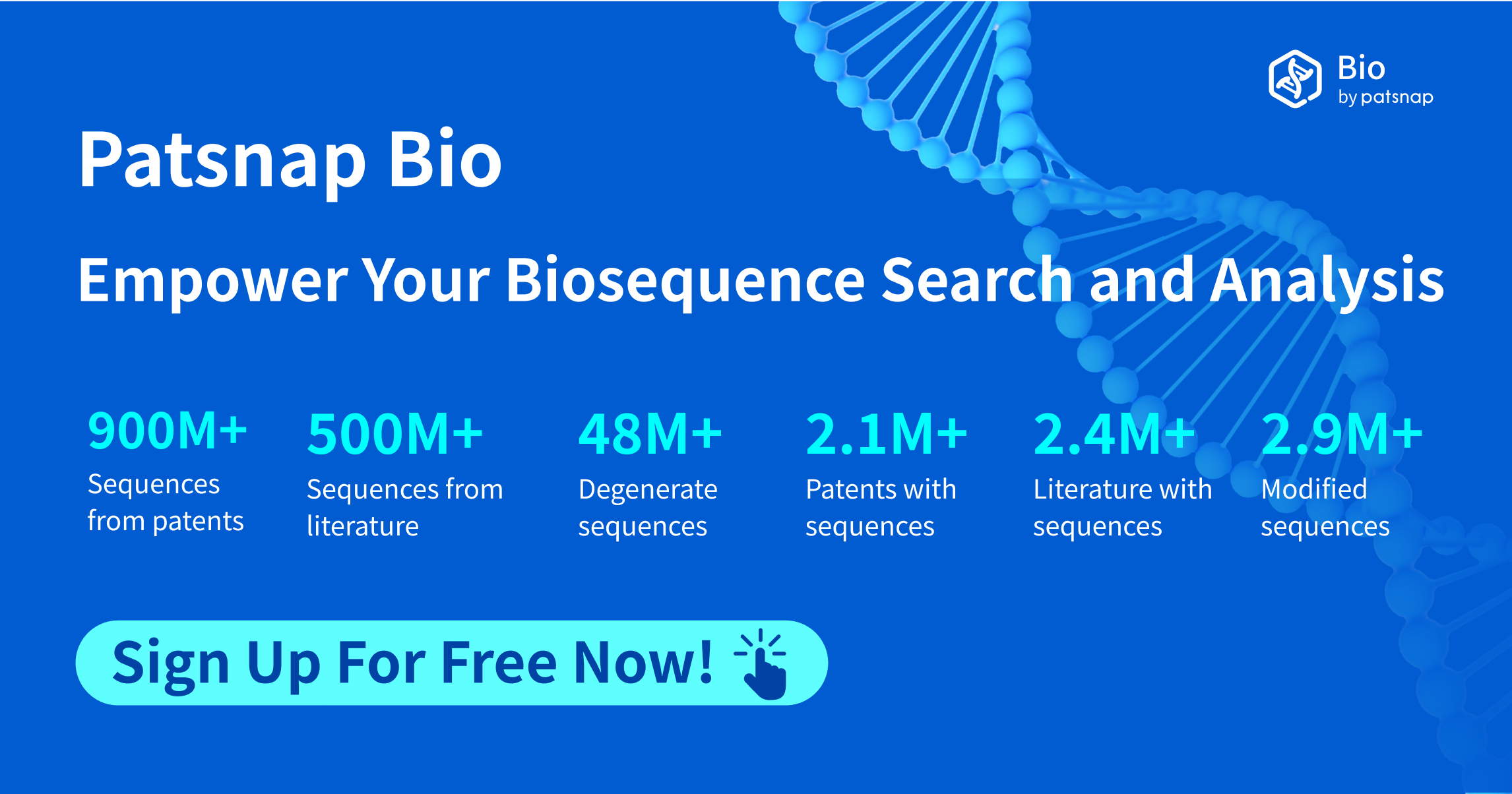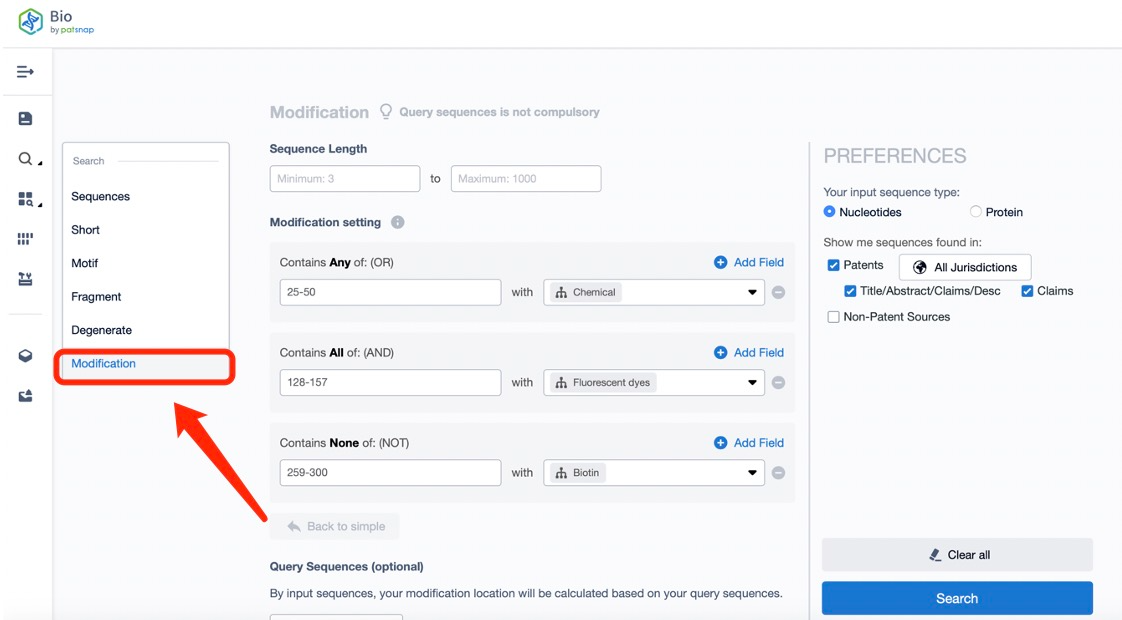Exploring the Mysteries of Chemical Modifications in Small Nucleic Acid Drugs: The Efficient Retrieval Pathway of Patsnap Bio
Small nucleic acid drugs are a class of gene silencing or activating technologies based on RNA or DNA, which specifically bind to target mRNA through the principle of base complementarity, regulating gene expression. They are used to treat a variety of diseases, including genetic disorders, viral infections, and cancer. The role of chemical modifications in small nucleic acid drugs is to enhance their stability, specificity, reduce immunogenicity and toxicity, thereby improving pharmacokinetic properties and therapeutic efficacy.
In the golden age of small nucleic acid drugs, industry giants Sarepta, Ionis, and Alnylam are leading the wave of innovation. With their exceptional R&D capabilities and market insight, these three companies have formed a "triumvirate" in the market. Sarepta and Ionis dominate the antisense oligonucleotide (ASO) field, while Alnylam leads the small interfering RNA (siRNA) market.
As the financial reports for the first half of 2024 are released, the market performance of small nucleic acid drugs is once again in the spotlight. It is reported that the total sales of the 16 small nucleic acid drugs on the global market reached $2.45 billion in the first half of 2024, a year-on-year increase of 17%. This figure not only reflects the expansion of the market but also shows the potential and demand of small nucleic acid drugs in treating various diseases.
In the R&D process of small nucleic acid drugs, in addition to the carefully designed nucleotide sequences, chemical modifications are key factors to ensure drug stability and achieve precise targeting. These modifications enhance the resistance of small nucleic acid molecules to serum nucleases, thereby extending their half-life in living organisms. By increasing the binding affinity with specific mRNA targets, chemical modifications ensure the high specificity of the drug, while minimizing non-specific binding and potential off-target effects. In addition, modifications also optimize the pharmacokinetic properties of the drug, including improving its transmembrane transport and enhancing intracellular uptake, which is crucial for effective gene silencing or activation.
The acquisition of chemical modification data plays a crucial role in the development of small nucleic acid drugs. It not only provides a wealth of reference resources for drug design but also helps predict and optimize the stability, targeting, and pharmacokinetic properties of the drugs. Furthermore, it supports intellectual property protection, facilitates interdisciplinary research collaboration, clinical research, and regulatory decision-making, thereby accelerating the drug development process and increasing its success rate. Patsnap Bio, with its chemical modification search function, provides users with a powerful tool for exploring multidimensional nucleotide sequence information, including patent analysis, FTO assessment, and intellectual property management. We will take a specific sequence example to explore how to efficiently summarize chemical modification search information in this database.
First, access Patsnap Bio. After entering the homepage, select the modification search according to your needs.
The chemical modification database includes simple search and advanced search. The simple search only includes sequence length and modification settings, while the advanced search, in addition to sequence length, also allows setting different modification options.
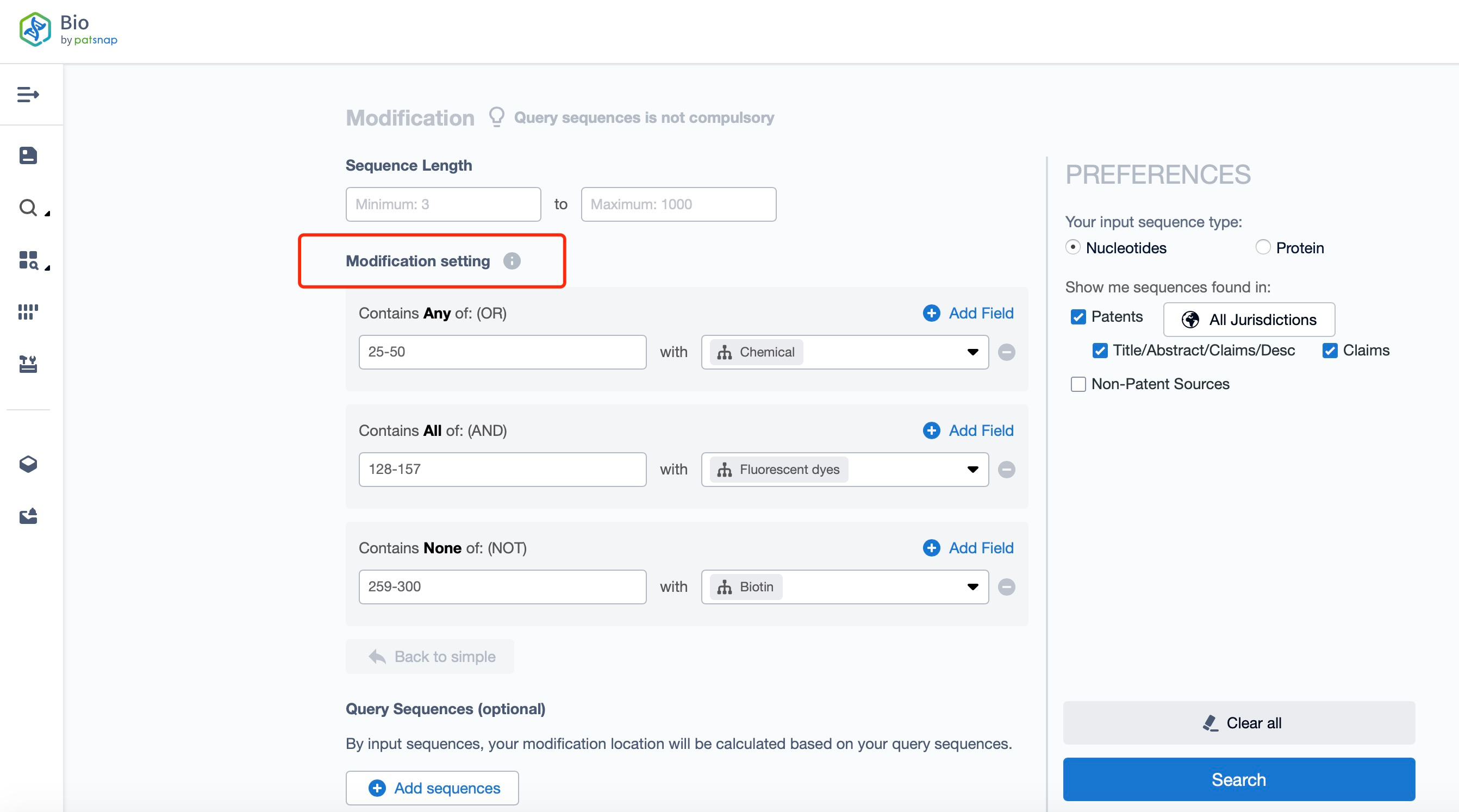
Under advanced search, you can select different types of modifications at different sequence positions according to your needs. Common modification types in small nucleic acid drugs mainly include 2'-O-methoxyethyl, phosphorothioate, 2'-fluoro, 2'-amino, cholesterol conjugation, peptide nucleic acid, locked nucleic acid, and tricyclic nucleic acid, etc. These modifications enhance stability, improve affinity, improve pharmacokinetic properties, and reduce immunogenicity, jointly enhancing the efficacy and safety of small nucleic acid drugs.
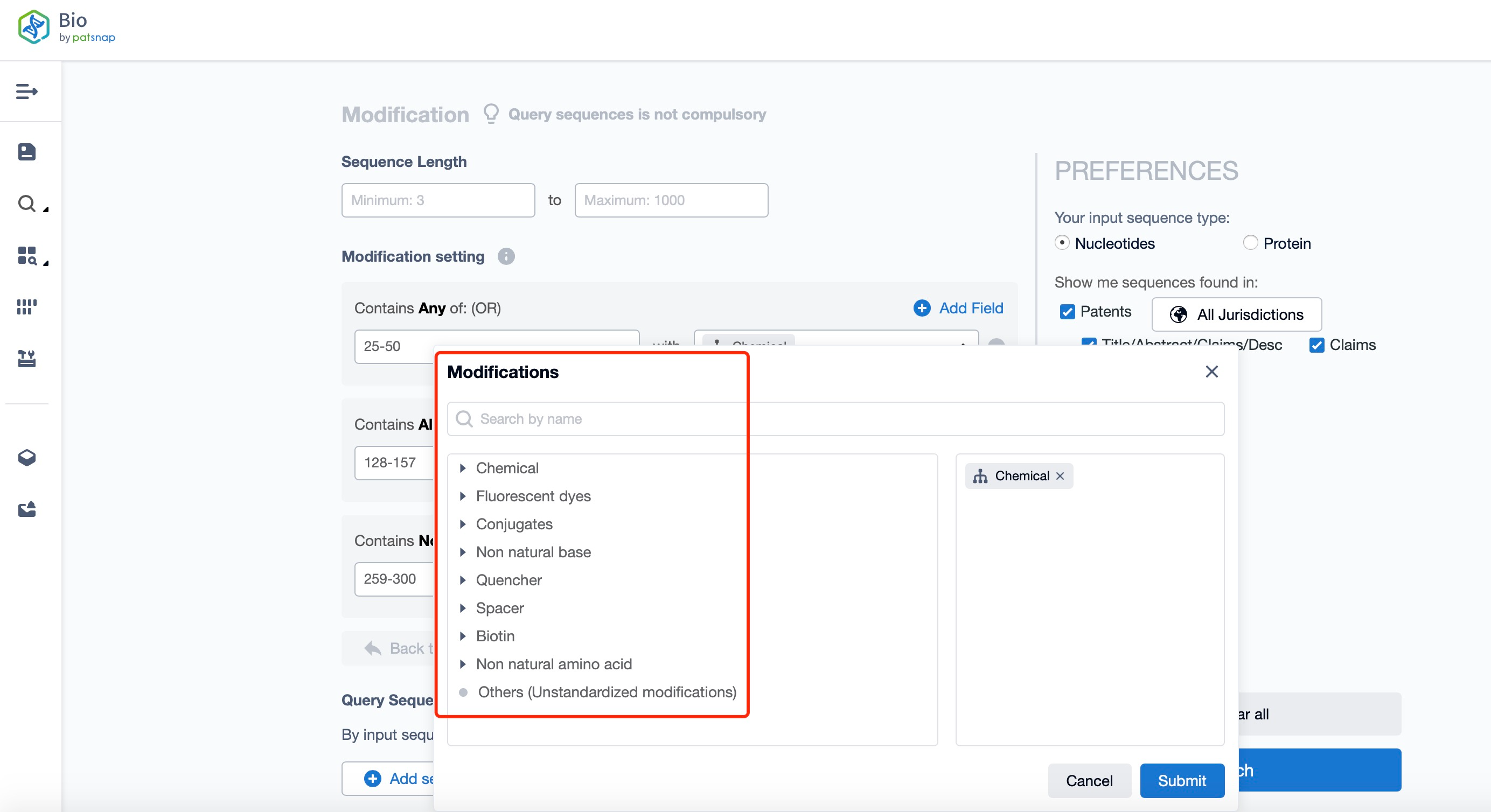
The modification search in Patsnap Bio offers a variety of modification types, including chemical modification, fluorescent dye modification, conjugate modification, non-natural base modification, biotin modification, and non-natural amino acid modification, etc. Fluorescent dye modification is widely used in cell localization, pharmacokinetic research, biodistribution research, image-guided therapy, molecular interaction analysis, high-throughput screening, and clinical diagnosis, as well as in basic research immunofluorescence detection, such as DNA-FISH and RNA-FISH. Biotin modification plays a key role in small nucleic acid drugs, not only for the detection and quantification of drug molecules but also for enhancing cellular uptake and targeted delivery through the interaction with biotin-binding proteins. At the same time, biotin-labeled small nucleic acids can also be used for signal amplification in molecular biology experiments and drug-target interaction research. The application of these modification technologies provides a variety of tools and strategies for the research and development and clinical application of small nucleic acid drugs.
If you want to find a sequence that includes multiple modifications, you can select different types of modifications in the advanced search according to your needs. If the focus is on specific modification sites, you can also specify these sites for query. In addition, if you only need to explore whether the sequences reported in existing literature or patents include specific modification types, you can directly search the database without uploading complete sequence information, thereby efficiently identifying and obtaining interesting modified sequence information.
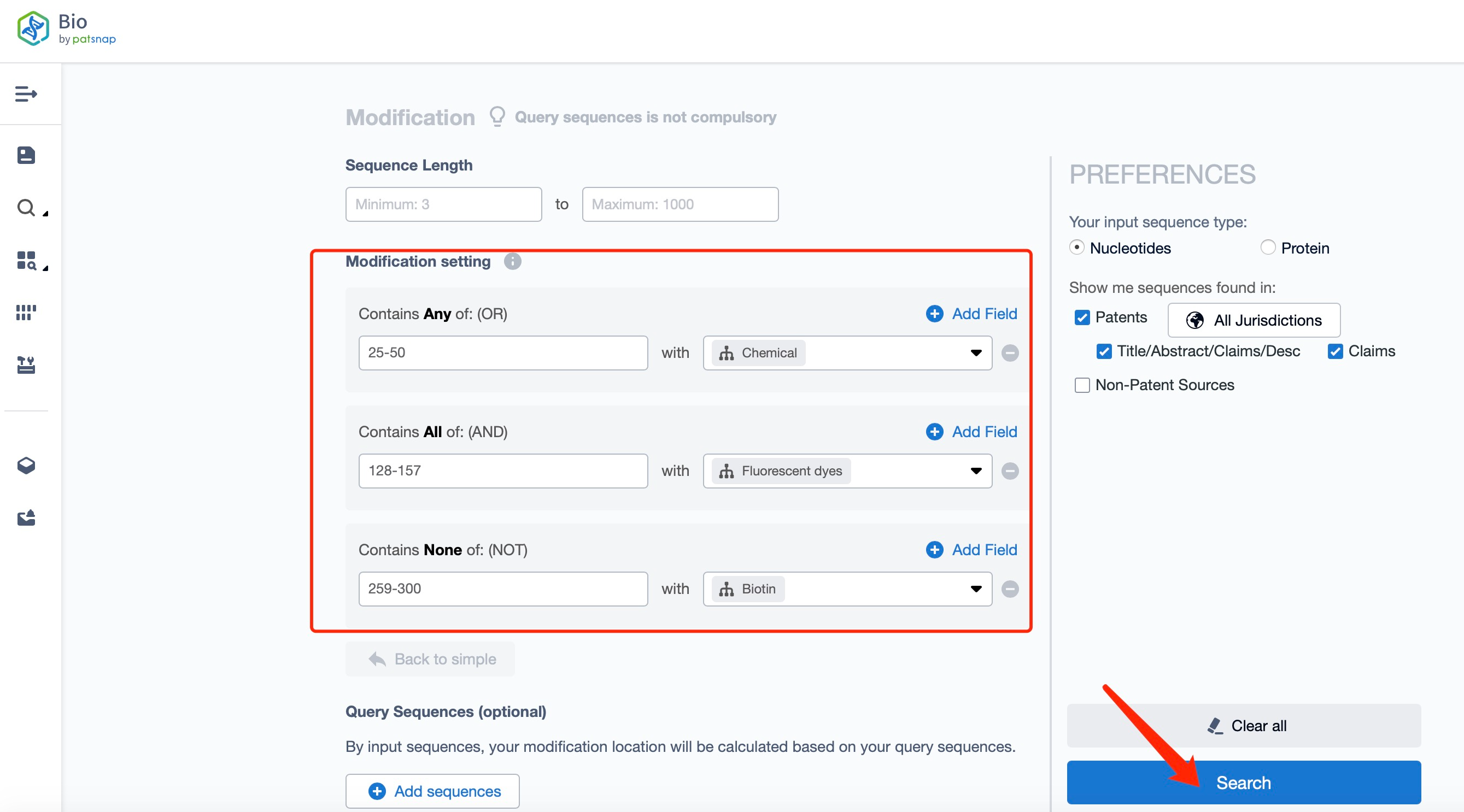
After the search is completed, you can enter the limited information on the left to filter the search results, which will give a more accurate search result.
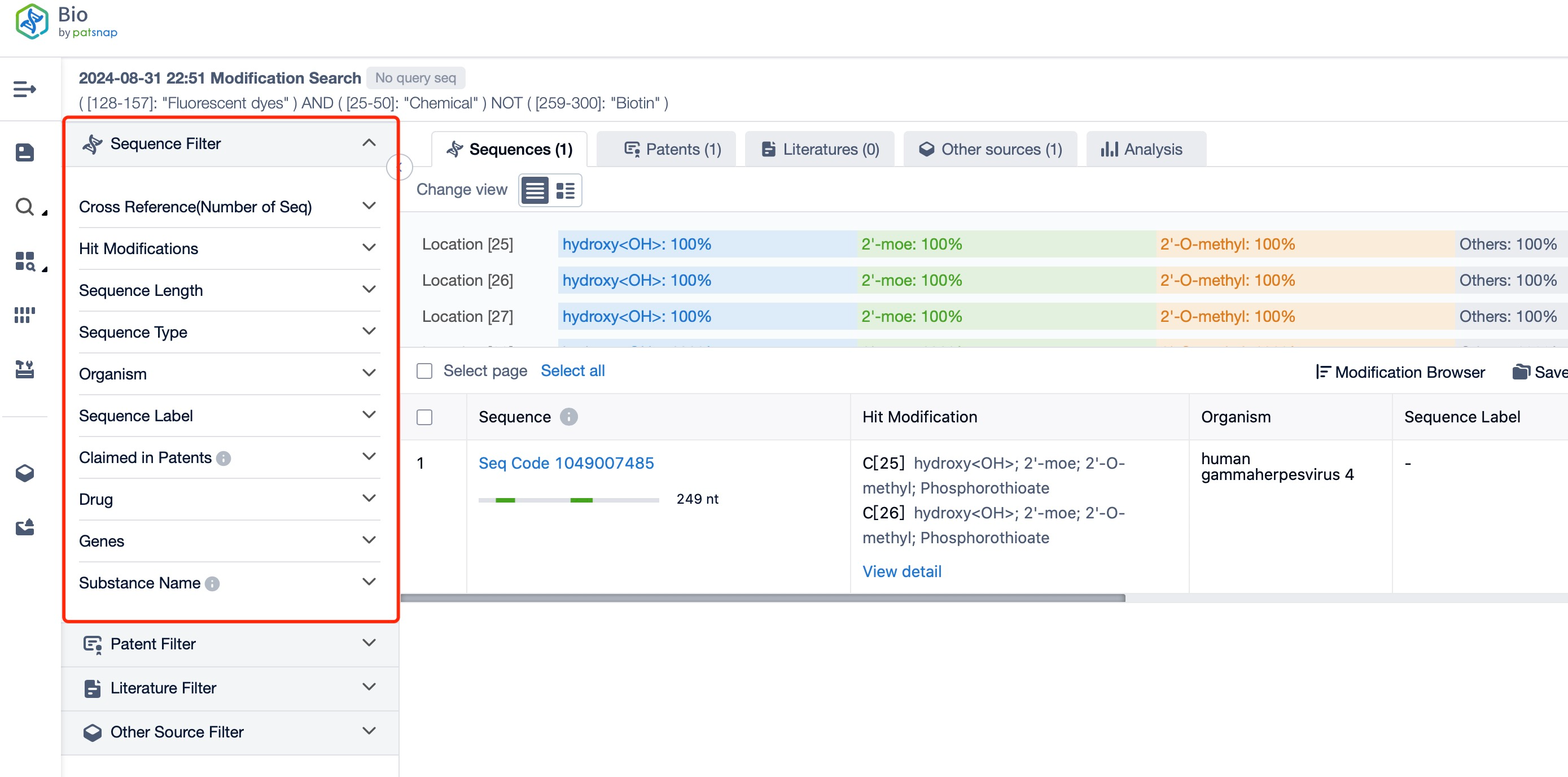
After the search results hit the relevant patents, Patsnap Bio can directly link to the related patents. By clicking on the green patent number, you can directly query the patent content.
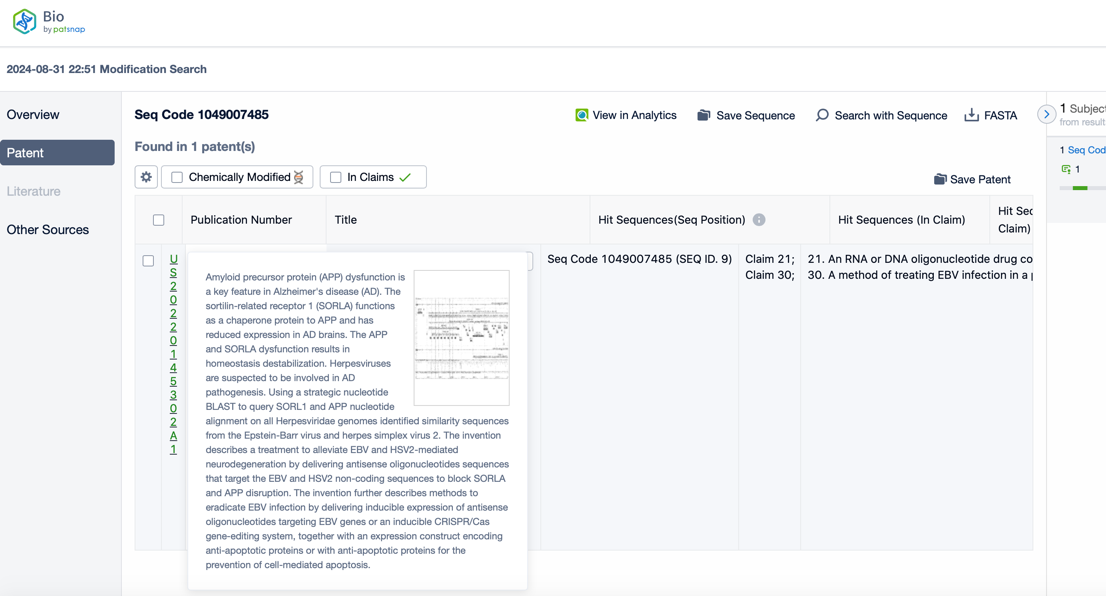
Linking to Patsnap patent database allows for an intuitive query of the patent details related to specific chemical modifications, including patent name, patent number, examination stage, and related public information, quickly understanding the patents with corresponding chemical modifications. This not only provides convenience but also provides valuable data support for intellectual property experts in drug development and patent strategy planning, ensuring that wise decisions can be made in the fierce market competition.
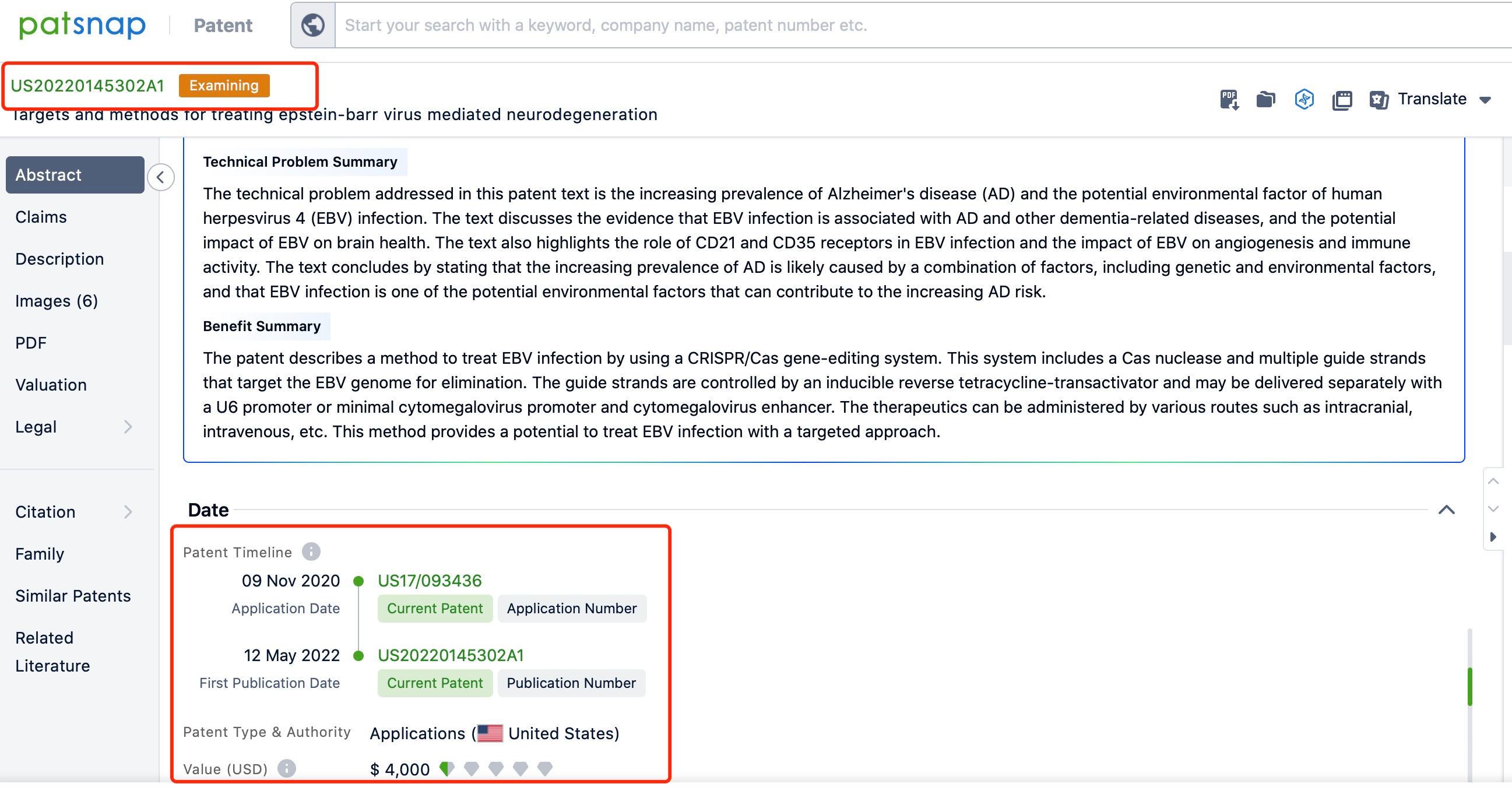
Summary
Chemical modification sequence search is crucial for the implementation of drug development and intellectual property (IP) strategies. It greatly improves the efficiency of the R&D process, enabling research teams to accurately locate target proteins and optimize drug design. At the same time, this search tool provides valuable data support for intellectual property experts, facilitating patentability evaluation and freedom-to-operate (FTO) analysis, thus consolidating the intellectual property defense line in the fierce market competition and avoiding the risk of infringement. The modification sequence search function in Patsnap Bio, with its efficient search capabilities, solves the time-consuming and labor-intensive problems in the traditional chemical modification search process, providing strong support for the research and commercialization process.
Better answers for better bio-innovations!
Validate novelty, eliminate risk, and innovate with confidence using the world’s largest sequence database curated from millions of patent and non-patent sources.
Patsnap Bio helps you turn weeks into minutes with cutting-edge AI-enabled tools built to master the complexities of sequence retrieval and automate IP analysis with precision and ease.
With best-in-class coverage of protein and nucleic acid sequences combined with state-of- the-art search algorithms, you’ll spend less time searching and more time bringing your bio-innovations to market.
